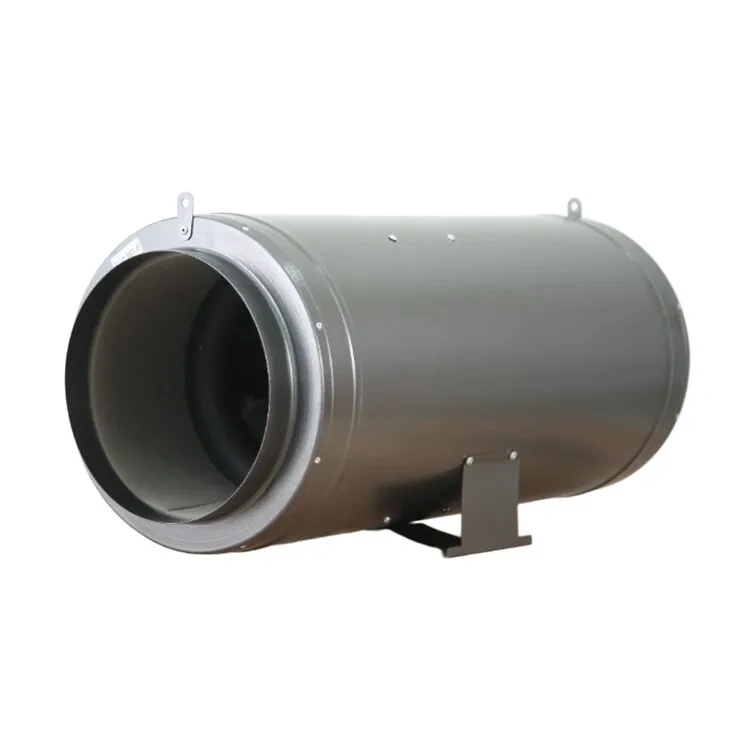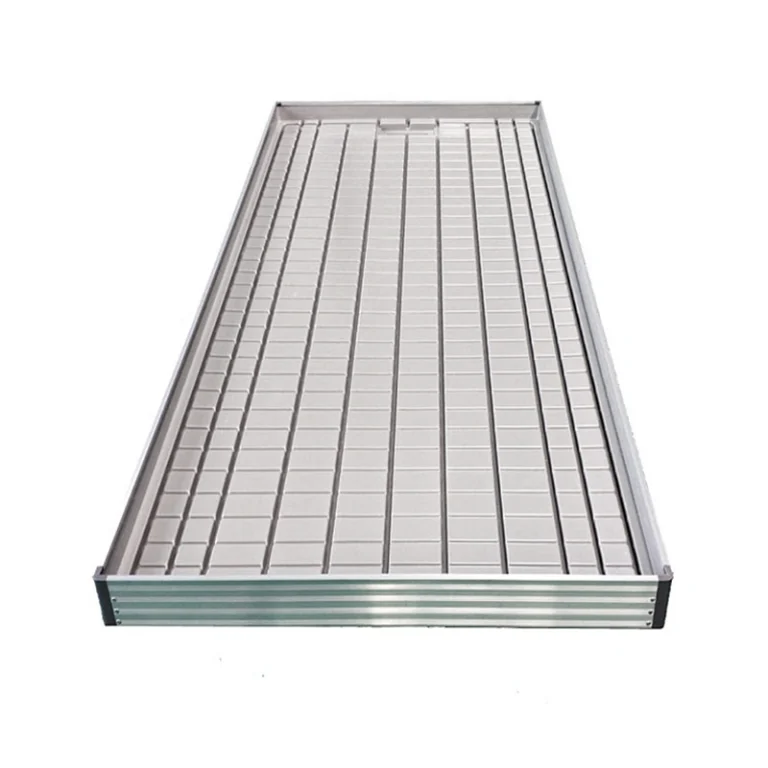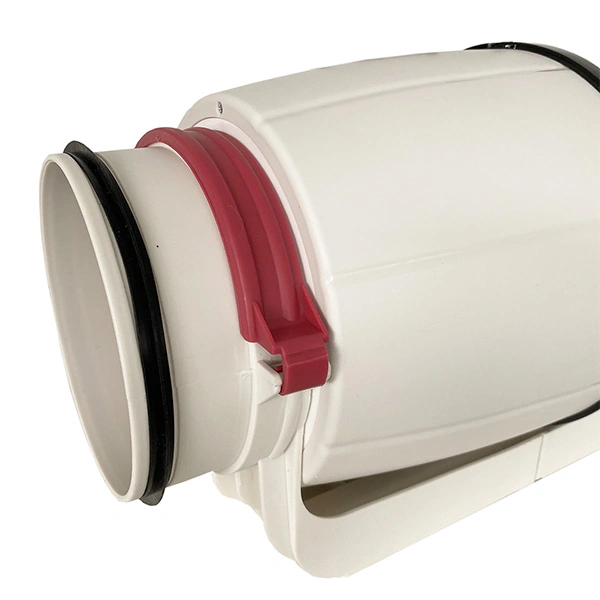What Are the Key Factors That Influence Hydroponics Setup Costs?
How Does the Type of Hydroponic System Affect Overall Cost?
Picking your hydroponic system is a big deal for your wallet. Simple setups like Deep Water Culture (DWC) are easy on the budget and a snap to build. They’re great for newbies. Fancier ones, like Nutrient Film Technique (NFT), Ebb and Flow, or Aeroponics, need extra gear—pumps, timers, and solid frames. That hikes up costs for parts and setup.
TIDESTAR’s Plastic Hydroponics Grow System Nursery Table Trays use pumps and a hefty water tank to splash nutrients onto plant roots now and then. This kind of system needs precise pipes and controls, adding a good chunk to your starting tab.
Why Scale Matters in Determining Setup Expenses?
Size flips your budget upside down. A small home setup might cost a couple of hundred bucks for a basic kit. A huge commercial farm? That could mean coughing up hundreds of thousands, depending on how big you go.
Larger systems need more stuff—extra lights, pipes, and fancy controls. But buying in bulk can shave off costs per item. That’s the upside of going big. Still, bigger setups get trickier to handle. You need sharp planning to keep your cash in line.
What Role Do Materials and Equipment Play in Budget Planning?
Gear and supplies are the backbone of any hydroponic system. From simple frames to high-tech gadgets, every piece tweaks your spending.
Essential Components: Pumps, Pipes, Reservoirs, and Frames
At its heart, your system needs pumps to push nutrients, pipes to move them, reservoirs to store the solution, and frames to hold plants steady. A neat trick is using a big plastic tote as a reservoir with plants chilling in a tray on top. These parts vary in price based on quality and brand.
The Impact of LED Grow Lights on Total Cost
Lighting chews up a big part of your budget. Top-tier LED grow lights save power but cost a pretty penny upfront. TIDESTAR’s RX-series-1000w Full Spectrum 5x5ft Samsung lm301H Foldable Plant LED Grow lights are built like tanks. With an all-aluminum body, passive cooling, and tough glass, they keep shining for 50,000 hours before dimming to 70% brightness. That’s a long run, but they’re a hefty chunk of your starting costs.
How does the Automation Level Influence Investment Requirements?
Automation makes things smooth, but it bumps up your initial bill. Systems with auto pH balancing, nutrient dosing, or climate sensors cost more than hands-on setups. But they save on labor and keep plant growth steady over time. TIDESTAR’s systems play nicely with automated Ebb and Flow benches, cutting down on manual watering while boosting efficiency.
Do Different Plant Types Require Different Budgets?
You bet. Leafy greens like lettuce or herbs need less light and space than heavy-hitters like tomatoes or peppers. Those need beefier lights and roomier root zones, pushing costs up. TIDESTAR’s systems work for aquaponic and hydroponic gardens growing orchids, tomatoes, peppers, and herbs. Each plant’s needs shape your gear choices and budget.
What Are the Typical Price Ranges for Hydroponics Systems?
How Much Does a Basic Home Hydroponics Setup Cost?
A starter home hydroponic system runs from $100 to $500, based on size and complexity. Kits often include net pots—TIDESTAR’s planting baskets use sturdy PP plastic—simple pumps, tubing, and reservoirs made from totes or buckets. LED lighting adds another $100 to $300, depending on wattage. Samsung 100W LED Grow Light Quantum Plate for Veg Bloom is a great pick for small indoor growers.
What Should You Expect to Pay for a Mid-Scale Greenhouse System?
Mid-scale greenhouse setups cost between $10,000 and $50,000. These pack multiple grow beds or vertical towers, automated watering, and advanced lights like TIDESTAR’s 800w LM281B LED Grow Light 5x5ft Full Spectrum 2 Channels Dimming With UV IR. You’ll also need CO₂ generators, backup power, and monitoring software. TIDESTAR’s Hydroponics 4/8 Burners Natural Gas CO2 Generator fits these setups, boosting growth in enclosed spaces.
What Are the Costs Involved in Commercial Hydroponic Installations?
Commercial setups start at $100,000 but can zoom past millions, depending on size. They use heavy-duty gear like TIDESTAR’s 1000w Full Spectrum 5x5ft Samsung lm301H Foldable Plant LED Grow lights, centralized fertigation systems, HVAC for climate control, and labor management software. These are built for massive harvests but come with a steep price.
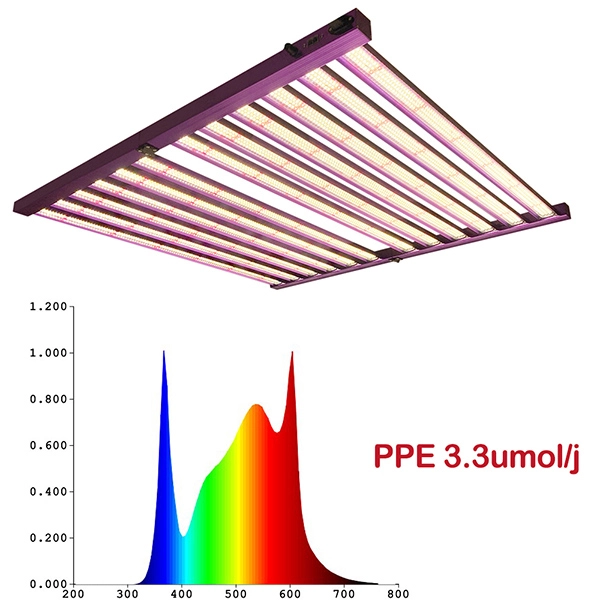
Which Additional Expenses Should Be Considered Beyond Initial Setup?
Beyond gear, you’ve got ongoing costs. Electricity, especially for lights, piles up fast. Water bills, replacement parts like pump filters, and nutrients—cheaper in bulk—hit your wallet too. For bigger operations, staff wages add up.
How Can ChatGPT-5 Help You Estimate Hydroponics Setup Costs?
Can ChatGPT-5 Generate Custom Cost Breakdowns Based on Your Inputs?
Sure thing. ChatGPT-5 whips up detailed cost lists when you share details like growing area size, crop type, yield goals, system type (NFT, DWC, etc.), lighting preferences, and automation needs. It churns out clear budgets with quantities and current market prices.
How Does ChatGPT-5 Adjust Estimates According to Regional Pricing?
ChatGPT-5 tweaks budgets using local factors like energy costs per kWh or shipping rates for bulky gear like reservoirs or lights. This gives you a plan that fits your area, not a one-size-fits-all guess.
Can You Simulate ROI Scenarios Using ChatGPT-5?
Totally. Feed in expected yield per cycle, local market prices per unit weight, and monthly costs (electricity, water, nutrients, labor). ChatGPT-5 maps out return-on-investment timelines, showing when you’ll break even—maybe in 6 or 12 months.
Is It Possible to Compare Vendor Prices with ChatGPT-5 Assistance?
ChatGPT-5 stacks up vendor quotes side-by-side. It checks product specs, warranties, and efficiency, especially for LED Grow Light Bar models. This helps you snag the best value, not just the lowest price.
How to Use ChatGPT-5 to Estimate Your Hydroponics Costs Step by Step?
Define Your Growing Goals and Production Scale
Start by pinning down your plan. Growing herbs at home? Or aiming for a commercial leafy green empire? Your goals guide system type and lighting choices.
Choose the Appropriate Type of Hydroponic System
Pick between DWC, NFT, Ebb and Flow, or Aeroponics based on your goals and cash. TIDESTAR’s Plastic Hydroponics Grow System Nursery Table Trays are awesome for scaling up later without a full overhaul.
List Out All Required Materials and Equipment
Jot down everything: net pots, Plastic Propagator/garden Hydroponics Seedling Propagator, pipes, pumps, reservoirs, LEDs, nutrient solutions, CO₂ generators—from seedling to harvest. Don’t skip anything to avoid surprise costs.
Input Detailed Parameters into ChatGPT-5 for Estimation
Feed your list into ChatGPT-5 with quantities and preferred brands or models. It’ll spit out neat cost tables by category, including labor if you ask.
Refine Budget and Configuration Based on Feedback
Use ChatGPT-5’s tips to fine-tune your plan. If ROI looks too long, swap pricey foldable LEDs for fixed panels. You’ll save cash without tanking yields.
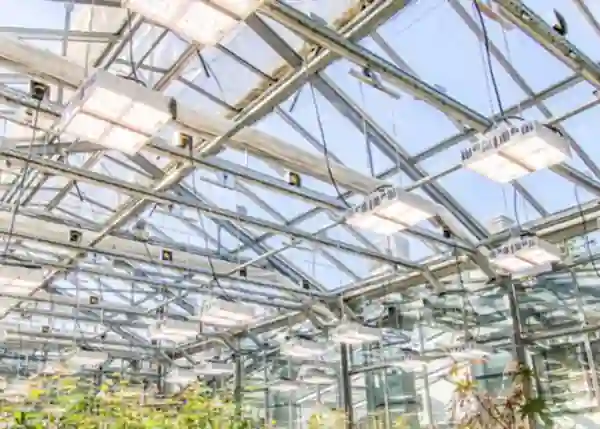
What Are Some Effective Tips for Reducing Hydroponics Setup Costs?
Is Buying Used Equipment a Viable Option?
You bet. Using grow lights or reservoirs from trusted sellers can cut startup costs big time. Just check LED usage history—50,000 hours is their typical lifespan before light dims to 70%.
Can Bulk Purchasing of Nutrients Lower Ongoing Expenses?
Absolutely. Buying nutrients wholesale slashes per-liter costs, especially for mid-to-large setups where monthly use justifies big orders. It saves cash and delivery hassles.
How to Optimize Lighting Without Overspending?
Pick efficient LEDs that match your grow area. Skip oversized fixtures wasting light. TIDESTAR’s lights can sit up to 4 meters above the canopy, covering just what you need without extra wattage jacking up bills.
What Parts of the System Can Be Built DIY to Save Money?
DIY frames with PVC pipes or wood, homemade reservoirs from food-grade totes, or mixing your own nutrients (if you’re skilled) save a ton. These dodge retail markups on kits aimed at convenience buyers.
FAQ
Q: What factors most influence hydroponics setup costs?
A: System type (DWC vs NFT), scale (home vs commercial), materials, lighting (LED vs HID), automation level, plant types, and whether you buy new or used gear.
Q: How much should I budget for LED grow lights?
A: Expect $100–$1,000+ per fixture, based on wattage and brand. TIDESTAR’s RX-series-1000w Full Spectrum 5x5ft Samsung lm301H lasts 50,000 hours.
Q: Is it cheaper to build my own hydroponic system?
A: Yup—DIY with off-the-shelf parts saves hundreds over kits, but needs time and know-how for assembly and testing.
Q: Can I use ChatGPT-5 even if I don’t know much about hydroponics?
A: Totally. Share your space size and crop goals, and ChatGPT-5 guides you with step-by-step estimates based on industry know-how.
Q: Do different crops affect overall setup pricing?
A: Yes—leafy greens need less light and space than tomatoes or peppers, which demand stronger LEDs and bigger root zones, hiking costs.

